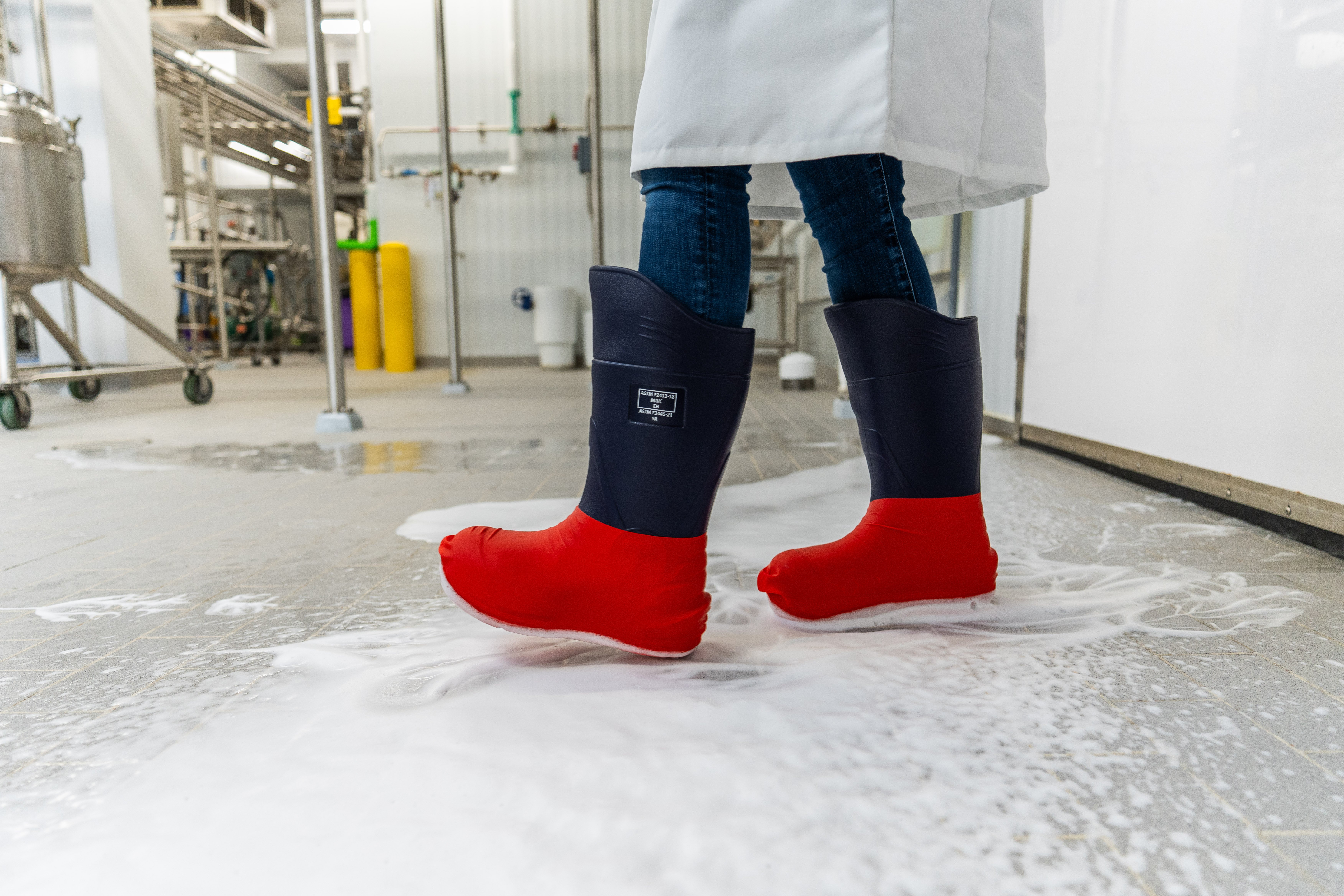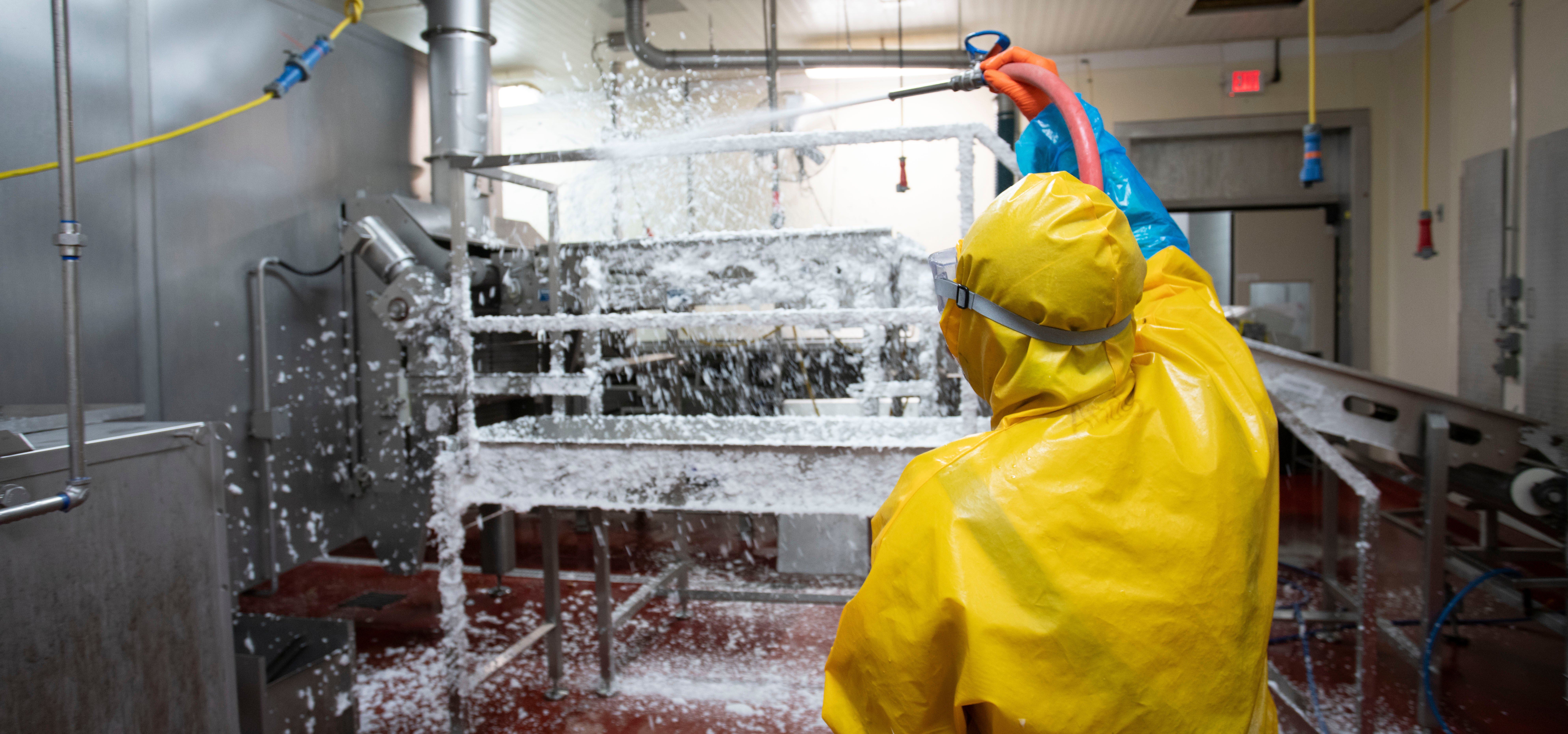
According to the CDC, 1 in 6 Americans become sick by eating contaminated food every year, resulting in an estimated 3,000 deaths. As if the human cost isn’t sobering enough, the Grocery Manufacturers Association also estimates the average cost of a recall to a food company is $10 million in direct costs in addition to brand damage and lost sales.
Considering growing public health concerns and the economic burden of foodborne illnesses, the 2011 Food Safety Modernization Act shifted the FDA’s focus from simply responding to food safety problems to trying to prevent them. FSMA now requires food facilities to conduct a comprehensive hazard analysis and then establish risk-based preventive controls. For a number of facilities, color-coding has become one of the preventive controls to protect food against direct contamination, cross-contact, and cross-contamination incidences.
According to 21 CFR 117 Subpart C, preventive controls are risk-based assurances that relevant food safety hazards are significantly minimized or prevented upon application of that control. The same regulations also stipulate that food manufactured, packed, or held by a facility will not be adulterated or misbranded in any way.
Preventive Controls are distinguished from the modified Current Good Manufacturing Practices (or CGMPs, which are the minimum, legally required sanitary and processing practices describing the methods, equipment, facilities, and controls for producing safe and wholesome food).
Color-coding, as an industry best practice, can definitely qualify as a valid preventive control.
Color-coding quickly communicates essential information for food safety, regardless of language barriers. It’s this simplicity that makes color-coding an effective preventive control.
Colors can signal the process status – visualize the traffic lights and what each color communicates to a driver. The same concept could apply to material handling across process flows and act as a signal for whether the product should move to the next process level or not.
More importantly, colors act as visual cues to identify the personnel, equipment or tools within an area. If blue-bristled pipe brushes are used for cleaning food conveyance pipes, and black-bristled tube brushes are used for clearing drains, there is a clear identifier between food-contact and non-food
contact tools to prevent accidental misuse.
The other function of color-coding is that colors can separate zones and products based on risk. Something as simple as red and blue storage tubs could easily separate low-risk raw meat from high-risk processed product to prevent cross-contamination. It can also be used to separate allergen zones.

There are three main ways a color-coding plan can fit into a food safety management system:
A color-coding plan can specify the colors used for scoops for handling different products within an allergen SOP, or cleaning brushes to be used for different surfaces within a Sanitation Standard Operating Procedure (SSOP).
For this, the plan must be validated or justified, monitored, verified, and reviewed as a food safety control.
This could reference other procedures and can also follow the same format as the food safety plan.
The facility may decide to reference color-coding within their Current Good Manufacturing Practices (CGMPs), Preventive Controls, or Best Practices framework as long as there’s consistency and a clear process of justifying, verifying, and reviewing the program.
The steps to establishing any preventative controls are as follows:

The Hazard Analysis Cube is one way of visually identifying the three key variables essential for a comprehensive hazard evaluation:
For each potential hazard, a risk analysis should be conducted based on Likelihood x Severity, as shown in the table. Issues that are of a greater public health concern are a high-risk priority and require immediate attention, followed by those with moderate-to-low risk, and then the very low, negligible, or no-risk issues.
As an example, consider wheat and soy cross-contact, a chemical hazard that could be accidentally introduced during processing by personnel. The hazard would be a high-risk issue, and the objective of the preventive control would be to reduce the risk to safe, low levels.

The format of the color-coding plan can be similar to a typical food safety plan, so it requires the same standard steps to prove its efficacy. Below, you’ll find the definition of each step in the process and an example using soy and wheat together.
Material/step: The point in the process where a food safety hazard may occur.
Hazard & risk score: The type of food safety hazard (biological, chemical, or physical) and the associated risk.
Control type & justification: The type of control that will be used to prevent or significantly minimize the hazard, such as sanitation preventive control, allergen preventive control, etc., and the valid scientific/technical reason for its application.
Monitoring action: The steps taken to evaluate the preventive controls with an adequate frequency to provide the assurance that they are consistently performed.
Corrective action: The actions that must be taken if preventive controls were not implemented properly or if a breakdown in procedure occurs.
Verification action: The methods for proving that appropriate preventive controls are in place, are being used properly, and are working correctly.
Records and reviews: The written documentation (i.e. records and supporting documents) associated with justifying, monitoring, verifying, and reviewing the preventive controls.
As an example, let’s consider a critical step within a typical food safety plan, where soy and wheat are used together while preventing cross-contact in the main supply of each allergen product container.
As a Monitoring Action to ensure the color-coding plan is followed, the supervisor may ensure, say, twice per shift, that trained operators use blue scoops for handling wheat and use red scoops for handling soy.
Now if the wheat and soy scoops were accidentally switched, the Corrective Action steps would likely be:
As part of the Verification Action, Quality Control can take sample allergen swabs before production begins to check if surfaces are allergen-clean. QC can also check if the operators are following appropriate allergen handling procedures.
Some of the Records and Supporting Documents that may be used in the plan are:
The color-coding plan is generally reviewed annually or whenever there are significant changes in allergen handling and processing activities.
When it comes to creating companywide awareness on color-coding, it’s not enough to show employees how a task is done. They should also learn, in the best and simplest way, why color-coding will help improve food safety and make their jobs easier. Trainers should clearly lay out the concepts, such as how certain food allergens could make a vulnerable individual seriously ill or cause death, and reinforce why color-coding as a preventive control is so important. When employees are invested in a program and feel like they have a stake in it, even just by knowledge of why and how it works, they may be more likely to follow it.
After six months or a year at most, refresh the employees and evaluate them to see if they know how well and why they are doing the process. It’s also essential to re-educate and re-train employees if there’s a breakdown or a change in the color-coding program.
If an employee is using the wrong scoop to handle allergens, it’s important to re-educate and re-train them to do it right at all times. If there is a change in the color-coding program, where a yellow scoop instead of red will begin to be used to handle soy, the plan must be re-developed to reflect the change, and employees must be re-educated and re-trained on it.
When it comes to using color-coding as a preventive control, the recently published FSMA “Final Rule for Preventive Controls for Human Food” Manual recommends the following best practices:

The single largest benefit of using color-coding as a preventive control is that it acts as a visual cue – many can identify a red scoop from a yellow one, regardless of what language they speak. Color-coding also is an inexpensive control and achieves a lot of impact for less money. It easily allows for identification, separation, and communication between products, processes, personnel and zones. This helps to prevent spread of contaminants, while at the same time promoting a culture of food safety among employees.
However, we should also be aware of the pitfalls and the potential opportunities underlying the implementation of the plan.
A color coding plan of just two or three colors should be easy to follow, as long as employees are educated, trained, and regularly refreshed about the details, and the color coding plan is reviewed at the required frequency.
A complex color coding scheme of say, 12 colors, will be more difficult to follow, and great care must be taken that employees know which colors to use at which times. Typically, a color-coding plan with three-to-five colors is recommended. However, in larger plants, where an employee will likely only be in a section where two or three colors are being used, using a full spectrum of colors can be helpful.
Multi-colored tools such as a pipe brush with a white block and black bristles, or a broom with red bristles, a white block and a black handle can also be problematic because employees could be confused about which set goes where. Instead, total-color tools in white, black, and red, each with their own purpose and zone would be a better solution. Multi-colored tools strip color-coding of its simplicity and its ability to be used as an easy visual cue, and should be avoided. Instead, total-color tools that have their own purpose and zone would be a better solution.
Color blindness affects around 1 in 12 men and 1 in 200 women, but color-coding can still be useful for these workers, too. Try to avoid red/green pairings or pairings close together in shade, such as blue and purple. Pairings like red and blue, or green and purple are all great choices for most color-blind people.
Plans work best with 3-5 colors in most small-to-medium plants. Secondary methods
of color-coding, such as using a broom that’s one color with a different colored handle, usually confuse workers and aren’t nearly
as effective as a total-color system.
Large changes shouldn’t happen frequently and should be carefully evaluated for necessity. Each change may cause confusion among the staff and could increase the chances of cross-contamination or allergen cross-contact.
Post signs, hold training meetings, and have managers reinforce the need for color-coding. These measures can enhance the food safety culture among employees.
Vikan has a large Knowledge Center (remcoproducts.com/knowledge-center) full of articles and white papers with tips on developing and maintaining a color-coding plan. We can also send experienced representatives out to your location to assist with creating the best color-coding plan for your facility.
Information provided by Vikan®

Vikan is a leading supplier of hygienic cleaning tools and insight for the food & beverage industry and other hygiene-sensitive environments in North America.

December 10, 2025
What is OSHA's Regional Emphasis Program (REP) for the food manufacturing industry? The OSHA Regional Em...

December 8, 2025
There is a fundamental connection between worker safety and food safety: A failure in worker safety can ...

December 1, 2025
Nelson-Jameson understands that efficiency and worker safety are equally important goals in food manufac...